US STUDENTS REPORTING AROUND THE COUNTRY
Our Fulbright US Students, working throughout north and southern Chile describe the project activities developed during the last two months, the places they visited, achievemmnets reached and people met. Learn about it here…
Katharina-Victoria Perez-Hammerle October 2017
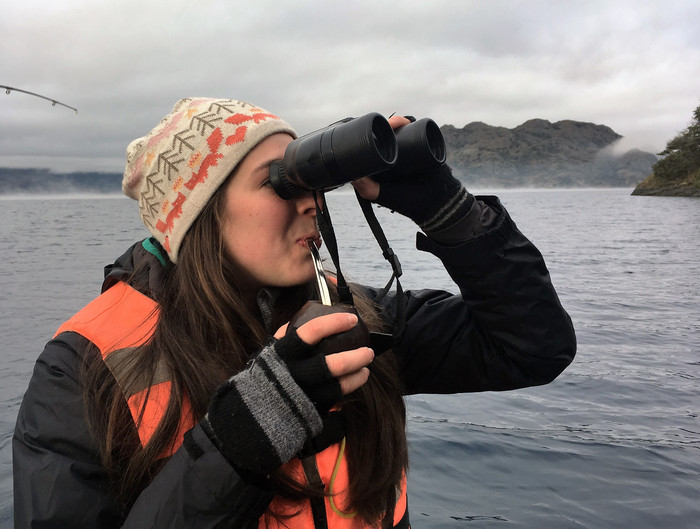
This month I had a few meetings at the CONAF central office in Santiago in order to receive GIS files to facilitate making maps and also met to discuss the possibility of testing the SMART and Cybertracker monitoring systems in Protected Areas in Patagonia. I spent the weekend visiting Valparaiso and Viña, as well as Olmué. The vibrant bohemian nature of the coastal towns was incredible.
The next 2 weeks of September were spent in the field in Torres del Paine where I set up 5 trail cameras along the W trail as a pilot to help guide camera trap use in the park. The first female mountain ranger in Torres del Paine accompanied me the whole way and thus became fully trained on camera trap use and mammal tracking. After a week in the field, the cameras were reviewed to show 2 foxes, 1 European rabbit, 2 robins, and 3 of the endangered huemules. I am very happy with these results since generally cameras are left out for months at a time but within a week we were able to capture imagery successfully of native fauna. During my stay in Torres del Paine I documented the presence of 8 huemules in total and digitalized local expert knowledge on huemul home ranges within the protected area. I have been in contact with the new conservation program director of the park since then to help generate a monitoring strategy.
The last 2 weeks of September were spent in Coyhaique. In order to return to Coyhaique to attend meetings at the CONAF regional office, I passed through Argentina. This was my first trip to Argentina and the landscape and accent is profoundly different to that of Chilean Patagonia. In El Chalten, I managed to meet with locals to talk about huemul presence in the area and while completing a short hike found fresh huemul tracks. The email of an Argentinian huemul researcher was shared with me, whom I plan to get in contact with. Once in Coyhaique… I have been focusing on generating the threat and monitoring maps on the computer. Future plans include visiting areas in and near Bernardo OHiggins national park to assist in generating a monitoring strategy there and potentially going to Puerto Sanchez to explore huemul populations in that area. I am waiting to hear if working in Futaleufu or Jeinimeini will be a possibility. Since time is running short, it may be difficult to realize those field trips.
My work this month has motivated the adoption of camera trap use in Torres del Paine and guided the way it is done. I have also had the opportunity to train two young rangers on camera trap use and deployment strategy. Building local capacity is one of the main focal points of my project and I am thrilled I got to apply it in the field and see the benefits immediately. There has been difficulty in using Cybertracker and SMART due to technical issues and failure to import collected data. I am working on finding a solution to this problem.
Jamie Kent September 2017
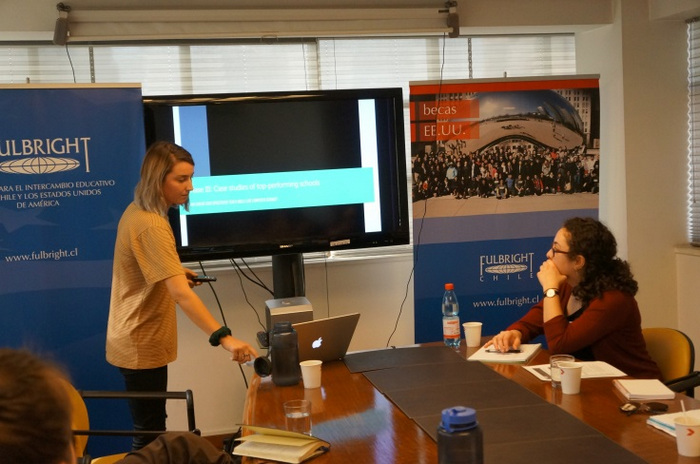
I am just finishing up with the fieldwork at Escuela Cahuil, the 7th of my 10 case studies. I updated the case study with the discussion, addressing the main things I learned from my work at this school. Each student built a video game, which shows an environmental problem that affects their community.
Additionally, I spoke at the Scratch al Sur conference in Santiago. I gave a 3-hour workshop on : “How to use Scratch to teach English as a second language.” Many of my workshop attendees approached me afterwards, thanking me for explaining things slowly, step-by-step.
Here is a synopsis of what I presented:
https://startupschools.cl/education/using-scratch-teach-english-second-language/
Here are the slides I presented:
https://www.slideshare.net/JamieKent4/using-scratch-to-teach-english-as-a-second-language
Since my Scratch for Teachers workshop was well-received, I wanted to continue the momentum of this initiative. I began a video series: Using Scratch to Teach English as a Second Language.
Here is the first video, which shows teachers how to use the “say” blocks in Scratch. These are a good tools for getting students to write dialogues in English. :
https://www.youtube.com/watch?v=_KR51ceop0E&lc=z22uutph2kmizpgra04t1aokg3zrmqm3ycbrwww42xuqrk0h00410
I loved teaching English teachers at Scratch Al Sur. I felt that my work had a much greater reach: Instead of teaching one classroom of students, I was able to teach English educators from all over Latin America. These teachers can bring my activities back to their students. Since some of the other workshops had been a little fast-paced, they were grateful I started from square one, and stopped for questions. I am still in contact with my attendees! I’ve sent them the slides from my presentation and field many of their questions. One of my workshop attendees also lives in Pichilemu. We are working on curriculum for her Segundo Medio class.
Additionally, my students finished their programming projects at Escuela Cáhuil. During the course of the project, I realized that I had assigned something more difficult than I originally anticipated. But I was so impressed by my students’ ability to understand advanced concepts.
I wrote this in the discussion of my case study: “There were moments when I felt like I had assigned a little more than they could handle. In the end, not every student had incorporated all three project elements into their final submissions. But then, there were some students who did build everything. I interpreted this to mean my project wasn’t in fact “too hard.” It was just right. All students advanced towards the challenging goals I set, and some even achieved them. It’s okay to have this distribution in the classroom. In fact, I think it’s better because standout students aren’t held back, and students who need a little more time can learn from those ahead of them.”
As it happens, my two stellar students were both girls. I made sure to demo each of their projects to the class, pointing out how advanced their games were. Especially in light of recent events in the U.S., we need to support women in STEM fields!
Eric Nucci October 2017
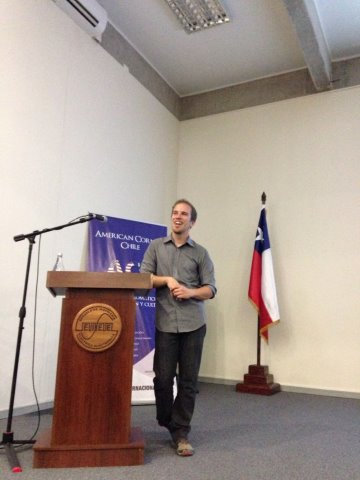
This month my focus was on making a turbine which would stay here in Santiago and provide us with data. I made it by hand and am now testing the motor sealed inside to see what kind of control we have over its tip-to-speed ratio. I also was in contact with Edmund Optics because due to my application, my University is in the running for $10,000 USD in optics. I am very excited about it! At the end of the month I went to Arica to help the American Corner there by presenting on my work.
This month I have a chance to go to Chiloé to interview “pescadores” (fishermen) there to see what is their understanding and support of marine energy projects in the area. I will also continue improving our turbine model and working on ways to better replicate the real full size one in France.
This month my most positive work was in Arica. Not only was the auditorium full, meaning I reached out to many people, but it was also recorded and I think part was put on local television. I also met local families and helped in the American Corner with teaching English. It was amazing to get to work with the American Corner and Nicole Ahumada there is doing great work. Also my English conversation class continues to flourish as the students and I all know each other better every week.
Here is me presenting in Arica about my project and marine energy in general. Also here is my constructing the 2nd turbine
Sara Gonzalez Sept 2017
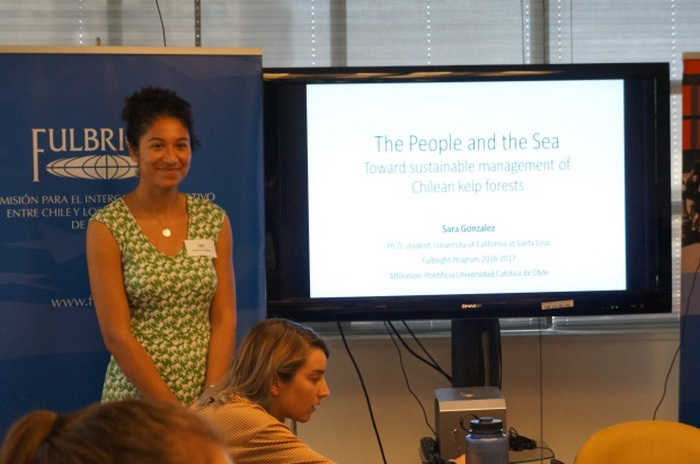
This month I organized and conducted fieldwork, traveled to a fisherman caleta in the IV Region to carry out interviews, processed samples at the university’s laboratory in Santiago, and began acquiring fish for a laboratory experiment. We collected algae and water samples from three different field sites, along a gradient of fishing intensity. This was the first time that I had organized the protocol for field collection and made the dive plan (all dives done for research at the marine lab must have a pre-approved dive plan), and it was a great learning experience.
I had the opportunity to travel to and conduct interviews in Los Vilos, a caleta with more intense algae harvesting than Las Cruces. My neighbors, whom I have gotten to know well as I frequent the small cafe they run out of their house, generously offered to drive me to Los Vilos and introduce me to folks they knew at the caleta, which greatly expedited the interview process.
Toward the end of the month I began acquiring fish for my experiment. We had initially planned to dive and catch fish in large nets, but the rough sea conditions made this impossible and we instead used hand-line fishing off the dock (learning how to fish was not a skill I expected to gain!). This process proved a bit slow for the quantity of fish we need, so we will likely also supplement with fish purchased live from fishermen near Las Cruces.
Next month, I plan to start the laboratory experiment and begin processing those samples in Santiago. I will use all of the interviewees’ answers I have to date to craft a new survey with more focused, less open-ended questions, and I will center my efforts on caletas in the V Region.
My neighbors, recognizing my project’s focus on algae, took it upon themselves to introduce me to a young woman from Santiago who frequents Las Cruces and is attempting to start a business creating edible molds and biodegradable plastic substitutes from cochayuyo (one of the algaes commonly collected in this region). We were each fascinated by the other’s work, and we’ve since been in touch, exchanging thoughts and information about cochayuyo and other kelps. I helped connect her with professors at my university who specialize in algae, as she is looking to expand her biological and ecological knowledge. I love these types of serendipitous connections that come out of just talking to people about your passions.
Getting a handle on interviewing fishermen was definitely more difficult than I had anticipated. I initially planned to just do a few preliminary interviews, then revise my questions and surveyed a larger group of fishermen. However, it took time to learn all of the nuances surrounding the topic of algae harvesting, understand the local management system, and learn all of the vernacular that the fishermen use to refer to their harvesting practices. At this point, I now feel like I am capable of constructing a well-informed, more focused set of interview questions, but as I have just a few months left I will likely need to restrict the number of caletas I visit to local ones. In the end, this may serve the mission of the lab just as well or better, as the investigators are primarily interested in knowing the potential of more intensive harvesting techniques to move into Las Cruces and elsewhere in the V Region.
As an additional comment, I also had a fun weekend in the tranquil countryside of Pelumpen (an hour inland from Valparaiso) enjoying the company of fellow Fulbrighter Katharina-Victoria and her friend, a park ranger who works with huemul. It was great to catch up on each others’ projects and meet new people!
Amanda Harris October 2017
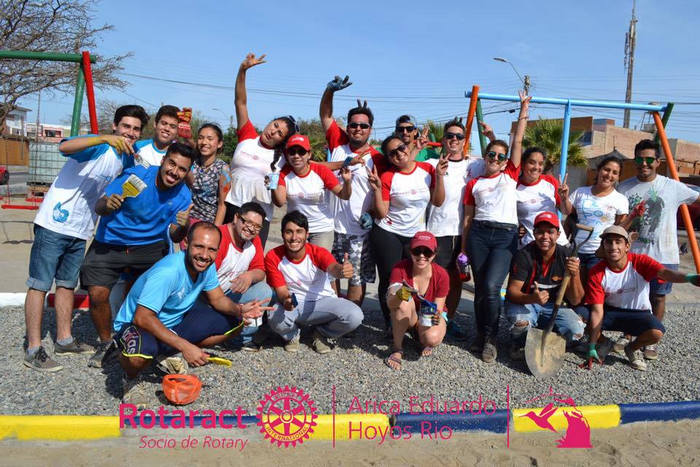
Please describe the activities that you developed during the month, places you visited, people with whom you worked, etc. I am still attending an Aymara language course and the Ethnography of Northern Chile course.
I am in the process of transcribing the multiple interviews that I conducted this month in order to analyze the results with a more nuanced lens. I conducted interviews with Aymara women who gave birth within the hospital using the intercultural program. I also interviewed a documentalist who studied the Aymara birth in Arica and Bolivia. Additionally, I interviewed doulas (birth assistants), an anthropologist, and a matrona (midwife) who are organizers in a local movement to humanize birth and reduce obstetric violence in Arica and Chile. I am becoming more active in the local politics around birth in Chile. I have scheduled follow-up interviews with activists in the country to see how my research can support the movement.
I continued learning about local culture through dance. For the Fiestas Patrias, I learned how to dance the national Chilean dance, the cueca, including the variation from Chiloe. However, as a current resident of Northern Chile, I am aware that the cueca is not the only folk dance of the region. Chilenization and violent assimilation methods have caused the cueca to overshadow other native dances of the area. Therefore, before leaving Arica, I would also like to learn other dances, such as Caporal and Tinku, to embody the diverse cultural traditions of the original populations in this region. My favorite dance experience in Arica was performing in Tumbe, which is a style from the Afroariqueño population. There is a large African-descendent population in Arica, and the dance is a fusion of Latin dance and African dance. Tumbe serves as a political statement because this population is fighting for recognition as a pueblo originario (original population) in Chile and using music and dance as a tool for awareness.
I am in the process of planning my fieldwork in the town of Putre. I will be observing medical rounds and interviewing Aymara and occidental health practitioners. Additionally, I hope to interview Aymara women who have given birth in the hospital in Arica using the intercultural program
With a new exhibit in the University’s hall from the Museo de la Memoria y los Derechos Humanos, I have had more conversations with my friends and their parents about the dictatorship. In many ways, I believe talking to a foreigner about this topic is easier because there is less fear and stigma. I believe the conversations are helping a couple of my friends rethink and define their opinions about past and current politics. Additionally, I went to a peña that supported traditional music of the region. I learned about how during the dictatorship, clandestine gathering were organized to keep northern folk music alive and thriving underground. This more nuanced understanding of the dictatorship, for both my friends and me, has been an interesting consequence of my stay in Chile.
I celebrated the Fiestas Patrias in the traditional Arican way with a week full of cueca, barbecues, and kite flying.
Michelle Stearn 10-05-2017
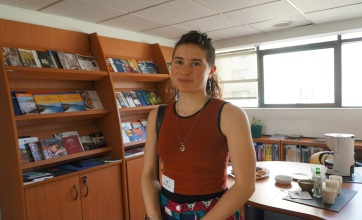
This month I focused on data analysis and assembling the hours and hours of interview footage I have collected/over the past 7 months. I am also writing the culminating articles that I will publish here in Chile and abroad. I’ve continued to do fieldwork despite focusing on the written, introspective analysis process. I interviewed several residents of my community who work with small scale energy projects to add a different perspective to the academic focus my data collection has taken on up until now.
I also made miraculous contact with a school that produces biogas from organic waste, and have arranged to film, document, interview, and provide a workshop for them the coming month. I made plans to visit a community nearby that has been creating electricity from a river turbine for 60 years.
This month, the map and online portion of my data exposition will be finished! The only thing I need for this to occur is persistence and focus. This must happen in order for me to promote at the municipalities of the surrounding communities in November.
My cold calls and visits are tapering off, but I’ll continue to collect interviews. I have one set up with a local educator and technician for a group (EcoEscuela Nomade) that collects waste vegetable oil to run a community vehicle.
I also have set up a community event to carry out a reaction to make biodiesel at the community laboratory in Labranza, near Temuco. I hope to convene several community actors, including university researchers and neighbors alike, to learn the process. I believe the most positive impact was the dialogue that I was able to encourage as part of the community interview process. The mutual exchange of information was inspiring, as the people I interviewed are part of a growing movement of people looking to create their own energy.
Yes, this month my sickness continued, and I also suffered from the stomach flu which halted my healing process from bronchitis. I had to take a step back from working in order to get better. I have finally conquered both!
